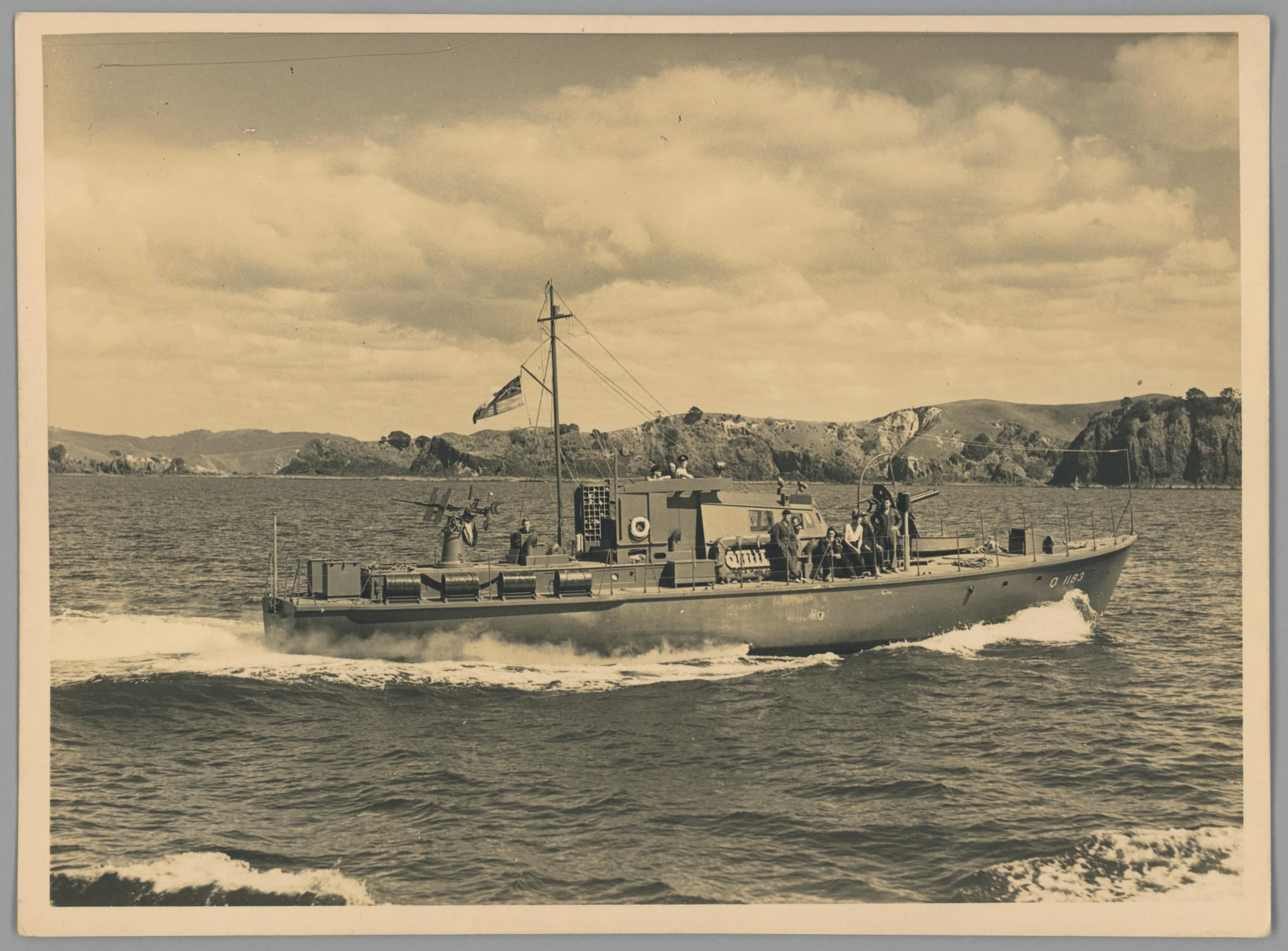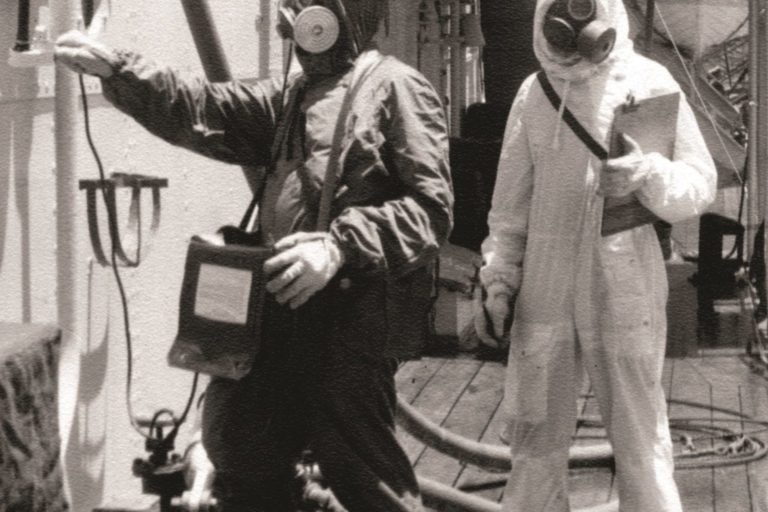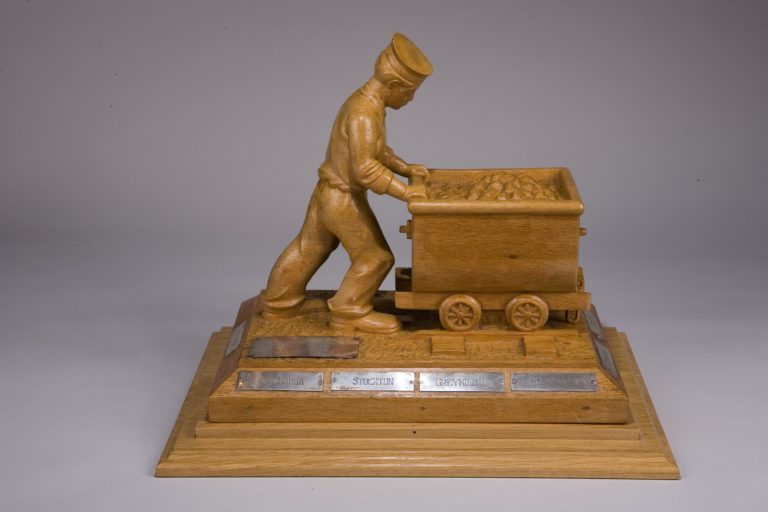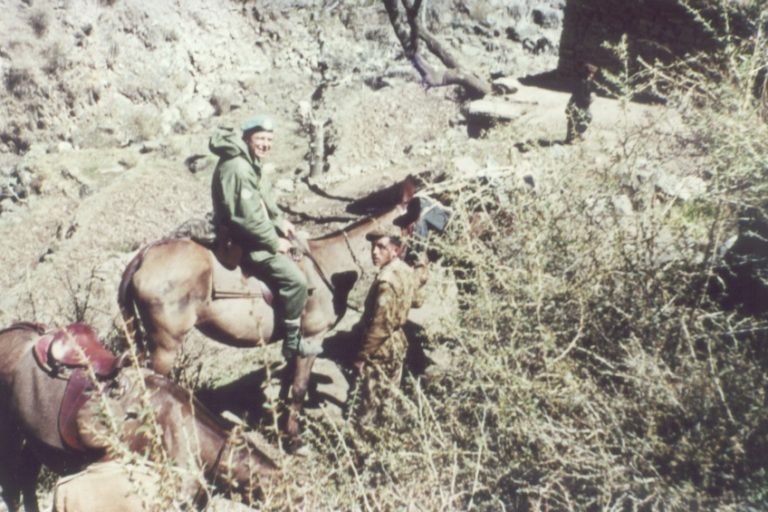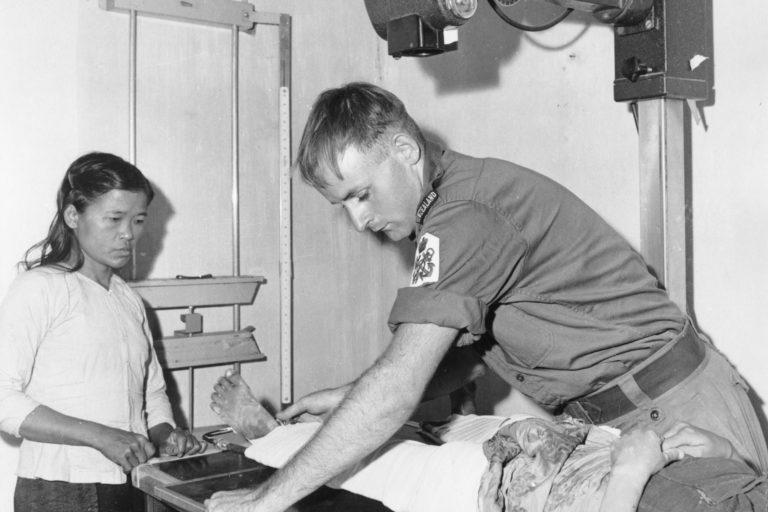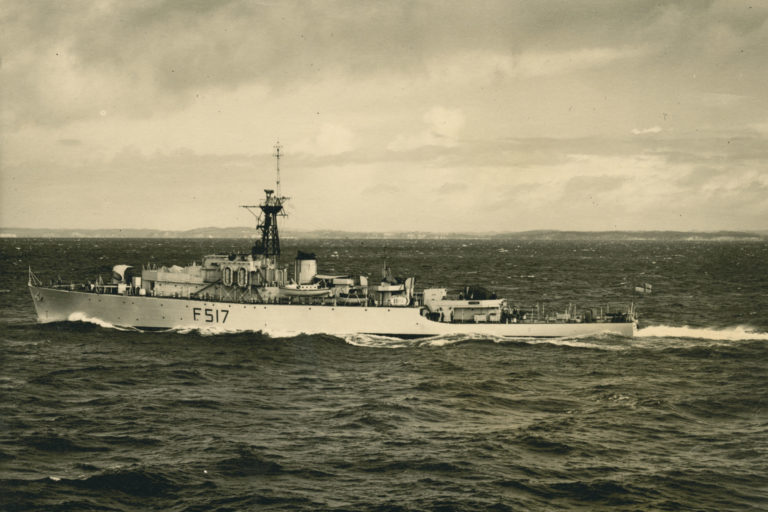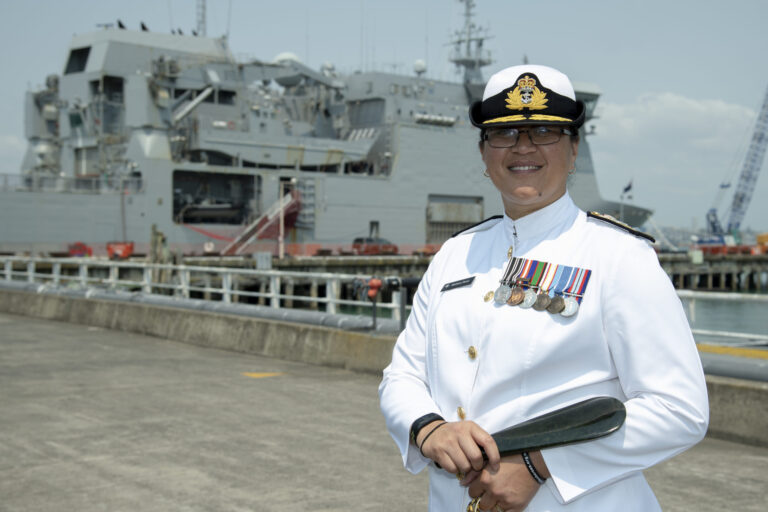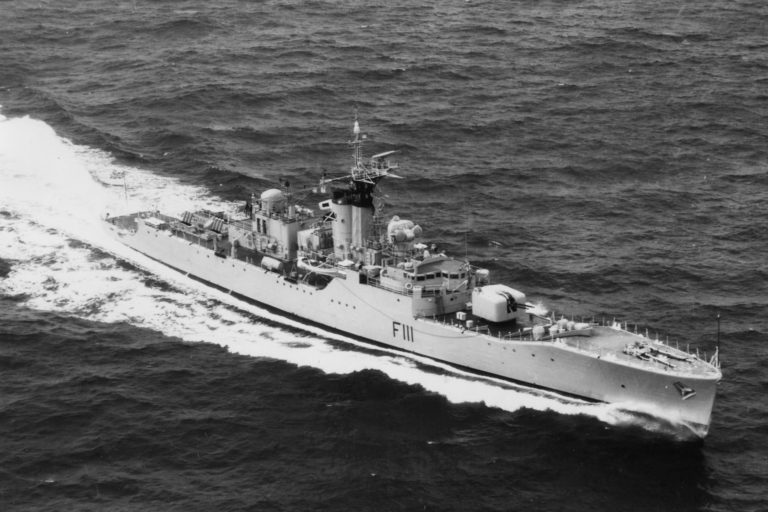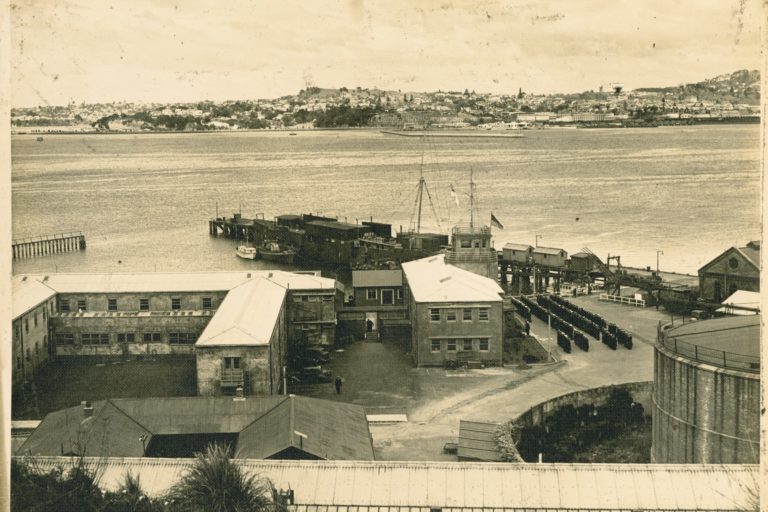After a successful referendum in 1949 which was overwhelmingly in favour of reintroduction, the National Government passed the Military Service Act 1949. All 18-year old men were obliged to register when they turned 18. Read about the vessels used for compulsory training.
After a successful referendum in 1949 which was overwhelmingly in favour of reintroduction, the National government passed the Military Service Act 1949. All 18-year old men were obliged to register when they turned 18. Of the 80% that were fit for service, were to be posted to one of branches of the armed services. Usually, the trainee had the choice of which branch they would want to complete their compulsory military service.[1] While the bulk of those eligible went into the Army for their training, the RNZAF had had 950 trainees per annum and 330 men[2] chose naval service to fulfill their obligations.
In 1951, the Act was extended to those aged 20 with the intent to bring the Army to full strength by 1954. The increase in numbers placed a great strain in the Army and those 20 year olds were released from further training obligations after one year’s part-time service. By 1955, the scheme was in full swing with 10,000 18 year olds annually receiving military training.[3] A 1953 American review of New Zealand Defence policy and preparedness reported on the scheme:
- New Zealand’s seriousness about its Defence
- Prior to the Second World War New Zealand had a poor attitude to defence. A combination of fiscal restraint and overhang from the first World War led to the downgrading of the armed forces.
- The effect of post-WW2 political realignments moved New Zealand closer to a relationship with the United States and Australia and away from a British-centric approach.
- However, inherent in any country of this size and economic viability, defence often runs a poor second to other expenditure.
- New Zealand’s main contribution to the Korean War was supply of butter, lamb and wool in such quantities that it provide a economic boost to the GDP from 1950-1953
What changed New Zealand’s focus?
- communist threat posed by the USSR
- threat of nuclear war
- outbreak of Korean War
- threat to New Zealand’s trade routes
- the passing of the Military Service Act 1949 that provided for compulsory military training (CMT) for all 18 year olds – entrants could chose what service they went into and had to serve 10 weeks followed by service with the Territorial force for five years
- this legislation has as it stated intent to being NZ to a state of readiness by 1954 to deploy a Division with appropriate naval and air support wherever it is required
It should be noted that only volunteers were sent to Korea and not those under CMT.
Service in the RNZN
Men who came to the RNZN were known as Compulsory Naval Ratings [CNR] and were kept separate from the Continuous Service Division – those who had enlisted with the RNZN.[4] The 14-week training period was conducted at HMNZS Tamaki, followed by three years of part-time service ‘consisting of seven days ‘sea-training’ and 39 parades annually with the RNZNVR.’[5] The RNZNVR at this time consisted of four units located at:
Auckland HMNZS Ngapona
Wellington HMNZS Olphert
Christchurch HMZNS Pegasus
Dunedin HMNZS Toroa
The RNZNVR accepted the responsibility to train and maintain the men who came to the RNZN under the Act. The RNZN was never satisfied with the scheme as the brief period of training did not allow the Navy to bring men to proficiency in the technical demands of the naval service. With the release of the White Paper on Defence in 1957 ended CMT with the RNZN. Between 1950 and 1957 1992 personnel were trained by the Navy under the scheme.[6] The age limits were then tinkered with again but in 1959 the Labour government who had opposed the Act when it was introduced in 1949 repealed the legislation stating that it was ‘a waste of time, money and personnel’.[7]
The Vessels
In 1947, approval was given for the provision of Harbour Defence Motor Launches (HDML) to the four units of the RNZNVR. The purpose was for training and to have, if required, a fully commissioned and armed Naval patrol vessel.[8] These were released from the War Assets Realisation Board. It was intended to arm them with machine guns, an Oerlikon gun, and depth charges. The government instructed that they would not be armed although the HDML attached to Ngapona had an Oerlikon fitted which was used for live firing exercises in the Hauraki Gulf.[9]
The vessels were allocated as follows:
1348 (P3563) HMNZS Kuparu – Pegasus
1350 (P3564) HMNZS Koura – Toroa
1194 (P3561) HMNZS Ngapona – Ngapona
1190 (P3562) HMNZS Parore – Olphert [10]
Specifications:
Displacement: 54 tons
Dimensions: 22 x 21.3 x 1.6m
Machinery: 2-shaft Grey (bhp 300) or Hercules (bhp 550) diesels = 10-12 knots
Armament: unarmed
Complement: 10 officers and ratings[11]
All CMT men in the RNZN would train on these HDMLs from 1950-1957 when fulfilling their obligations. Other RNZN vessels used for sea training included the Bird-class trawlers HMNZS Kiwi and which had been taken back into service in 1948 specifically as a training vessel and the Loch-class frigates HMNZS Kaniere, Hawea[12] and the cruiser HMNZS Bellona that in the early 1950s was used as a training posting for both, regular, RNZNVR and CMT trainees.
[1] ‘Compulsory Military Training’ Ian McGibbon (ed.), The Oxford Companion to New Zealand Military History, Auckland: Oxford University Press, 2000, p. 111-112.
[2] ‘ibid., p. 112.
[3] ‘ibid., p. 111-112.
[4] Ken Mutch Oral History, p. 5.
[5] ‘Compulsory Military Training’ Ian McGibbon (ed.), The Oxford Companion to New Zealand Military History, Auckland: Oxford University Press, 2000, p. 112.
[6] Grant Howard, The Navy in New Zealand: An Illustrated History, Wellington: A.H. & A.W. Reed, 1981, p. 126.
[7] ‘Compulsory Military Training’ Ian McGibbon (ed.), The Oxford Companion to New Zealand Military History, Auckland: Oxford University Press, 2000, p. 112.
[8] John McEwan, Auckland Rockies: A History if Auckland’s Naval Reserves 1858-1995, Auckland: Pyramid Press, 1995, p. 232.
[9] ibid., p .232.
[10] R.J. McDougall, New Zealand Naval Vessels, Christchurch: GP Books, 1989, p. 89.
[11] ibid., p. 88.
[12] ibid., p. 55. See also John McEwan, Auckland Rockies: A History if Auckland’s Naval Reserves 1858-1995, Auckland: Pyramid Press, 1995, pp. 237, 242.


